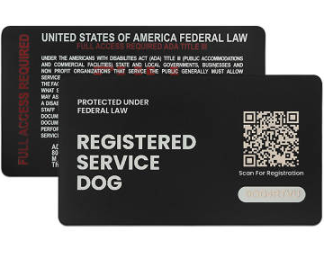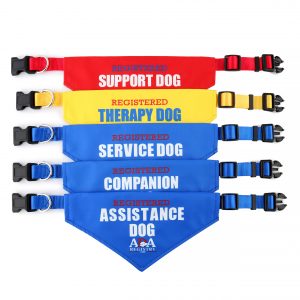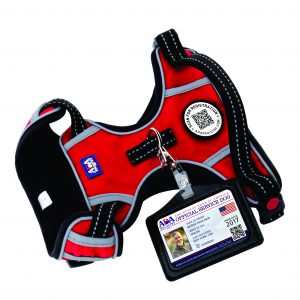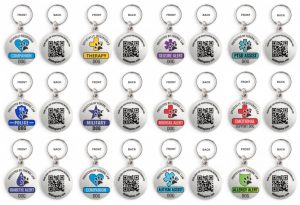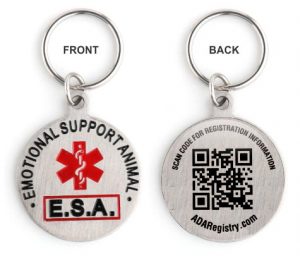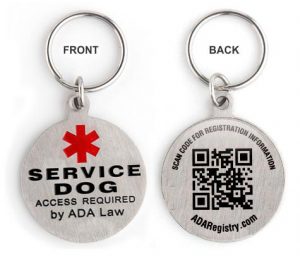IPO k9 Rocky Narcotics
Very BIG size “TOP working line world class stud” with full working title SchH3/IPO3/Kkl1/A1/A1. Very confident spirited male, strong and powerful, Very LARGE in size (67cm) with “Very Good” IPO3 Schutzhund score. Masculine structure, temperament is clear, stable nerves, gun sureness, self-confidence. Self-assured dog, “Clear in the head” with stable nerves and safe nature stud! Excellent search services, high drive-temperamental, very energetic. Safe Nature!
IPO k9 Rocky Narcotics
Very BIG size “TOP working line world class stud” with full working title SchH3/IPO3/Kkl1/A1/A1. Very confident spirited male, strong and powerful, Very LARGE in size (67cm) with “Very Good” IPO3 Schutzhund score. Masculine structure, temperament is clear, stable nerves, gun sureness, self-confidence. Self-assured dog, “Clear in the head” with stable nerves and safe nature stud! Excellent search services, high drive-temperamental, very energetic. Safe Nature!
IPO k9 Rocky Narcotics
Very BIG size “TOP working line world class stud” with full working title SchH3/IPO3/Kkl1/A1/A1. Very confident spirited male, strong and powerful, Very LARGE in size (67cm) with “Very Good” IPO3 Schutzhund score. Masculine structure, temperament is clear, stable nerves, gun sureness, self-confidence. Self-assured dog, “Clear in the head” with stable nerves and safe nature stud! Excellent search services, high drive-temperamental, very energetic. Safe Nature!
Family Gets Boy His Service Dog
A local family is looking to raise money for a service dog to help fill a critical need for their ten-year-old son.
“It would just make him a little more comfortable in the world that he lives in. The world that he lives in– none of us understand,” admits mom Starla Stevenson.
Her son Christian was diagnosed with Autism Spectrum Disorder at age 3. In addition, Christian also has Hypotonia, and Sensory Processing Disorder. “As long as we could remember, he would put his hands above his ears to cover his ears and he had sensory issues,” describes Starla.
As Christian has gotten older, he faces more challenges. Socially anxious, he’s a homebody and doesn’t like to leave the house. “He does have some repetitive, stimming, and sometimes self-injurious behavior where he will slap himself when he gets frustrated,” describes Starla.
To help with the challenges Christian faces, the Stevenson family is working with 4 Paws for Ability to pair him with a service dog. “We work with all different types of special needs and make sure we’re really training our dogs case-specifically for each individual,” states Jennifer Lutes, the Associate Director of 4 Paws for Ability.
Matching Christian with a service dog is costly. It costs 4 Paws for Ability between $40,000 – $60,000 to train and properly place each service dog. “A family’s portion of the cost of a service dog is $17,000. So then that goes towards the breeding, raising, training, and placement of a service dog,” says Lutes.
The Stevensons started fundraising about a month ago and so far have only raised $300. They say the price of the service dog is well worth the quality of life it could give Christian, providing more than companionship.
“A lot of families report that getting a service dog is just this new chapter in their life and can give new opportunities to a child with special needs,” says Lutes.
“It would mean that he would be able to sleep properly at night and he would be able to go out in public, even like if we would say ‘oh it’s time to go to the grocery store,’ he would be okay to just go to the grocery store,” tears up Starla. “It would mean that we wouldn’t have to worry about him slapping himself when he gets frustrated.”
A Service Dog’s Career
yellow Labrador retriever named Paul was born to be a Southeastern Guide Dogs superhero, but as fate would have it, that wasn’t to be.
Barely out of puppyhood, the 30-month-old dog spent his formative months like every future guide dog, living for his first year or so with puppy raisers, and then heading back to Guide Dog University for professional training.
Paul was initially raised by a very active, on-the-go family in Orlando, which turned out to be quite overwhelming for the young pup with a calm, laid-back personality. After being returned to the Southeastern Guide Dogs campus in Palmetto for reassignment, the 7-month-old puppy needed about six more months of puppy-raising.
“They gave him to us and asked us to focus on positive behaviors by redirecting his attention somewhere else,” said Apollo Beach resident, Chip Barker. He and his partner, Chris O’Leary, have a longstanding relationship with the school as “puppy finishers.”
So Paul moved in and completed his basic training before heading back to campus in August 2019 for professional assessment and career training. It was decided there he’d be best suited as a veteran’s service dog, and his training began.
“All of his progress reports were phenomenal,” O’Leary said. But then the pandemic hit.
In March, O’Leary and Barker were asked to take Paul off campus (like all of the other dogs at Southeastern at the time) and care for him. They were told he had a bit of a cough and was being treated with medication.
He was No. 1 on the placement list, but as the months went by the cough persisted, and Paul was held back, O’Leary said, adding the school was doing everything it could to help the pup. It had him see a specialist in May, and that veterinarian placed him on a three-month course of (different) medications.
Ultimately, it was determined Paul could not be safely placed with a veteran, and other career options for him were explored to no avail.
“They dearly loved him,” Barker said. “He’s just so special. They tried everything possible to keep him in the program.”
But in the end, Southeastern “could not confidently place him as a working dog, so it was decided he would be dropped,” Barker said. “We got the call we were dreading (Nov. 19).”
Both men were devastated.
“We felt it was coming, but we knew he could have made a difference in someone’s life,” O’Leary said. “We kept hoping he could be placed.”
As is customary, the school offered Paul to his puppy raisers as a pet. If they chose not to take him, the dog would be offered to the public for a donation of $5,000. The guys had 48 hours to decide.
They spent those hours going back and forth on what to do. Twenty years ago, they had taken in and adopted another career-changed dog as a pet and temporarily stopped puppy raising. The dog developed bone cancer and died 11 years later, after an exhausting and heart-wrenching battle with the disease.
Afterward, they went back into puppy raising and enjoyed it so much, they felt they’d never own another dog. But neither of them could actually bear the thought of Paul’s going to a new home and both realized their home was actually the best place for him to be.
“After a whole lot of crying, debating and sleeplessness, Paul’s trainer came by the house to tell him goodbye and drop off some things for him,” said Barker, who thought she was coming to take him away. “Chris told her we decided we just couldn’t let him go. She broke down crying and so did I.”
That’s how Paul went from being a future superhero to becoming “Paul Barker-O’Leary.” Instead of changing the life of a veteran with PTSD, he’ll simply be a hero to the guys who trained him.
“He’s changed our lives and will continue to do so with everyone who meets him,” Barker said.
O’Leary and Barker will take a short break before accepting a new puppy to finish for Southeastern Guide Dogs. But this time around, things will be a bit different. Paul will take part in its training.
Veterans With Service Dogs
Veterans with service dogs in Chino Hills will no longer pay license fees for their animals after the city develops a program with the Inland Valley Humane Society.
Assistant city manager Rod Hill told the council Nov. 10 that he has received numerous requests over the years to waive license fees for service dogs owned by veterans.
Under the Americans with Disabilities Act (ADA), service animals must be trained to specifically assist an individual with disabilities, he said.
Emotional support, comfort and companion animals are not considered service animals under the ADA, he said.
Mr. Hill said the city currently waives license fees only for service dogs trained to assist individuals with visual disabilities.
Chino Hills resident Ed Denzin, founder of Service Animal Training, wrote a letter to the council last December requesting a fee waiver.
“There are a lot of people in Chino Hills who are requesting service dogs,” he said. “Other cities waive license fees for service dogs, and I figured it would be nice for Chino Hills to do the same.”
The Marine veteran said his organization meets every Saturday from 10 a.m. to noon at Ayala Park in Chino with the goal of providing obedient, properly trained and certified service dogs to help people with disabilities and improve their quality of life.
Mr. Denzin said service dogs help veterans and others with disabilities such as seizures, diabetes, and PTSD.
There are two fees for service dogs: one is the California service dog registration fee that the Inland Valley Humane Society provides at no cost, Mr. Hill said. The second is the dog licensing fee which is collected by the Humane Society with a portion going back to Chino Hills.
License fees are $20 for altered dogs and $50 for unaltered dogs. License fees for dogs owned by seniors are $5 for altered dogs and $50 for unaltered dogs.
Ola Madsen of Chino Hills said he is grateful for the fee waiver. The Navy veteran who served from 1968 to 1970 said he has PTSD, tinnitus, vertigo, and two recent knee surgeries.
His Belgian Malinois named “Sunshine” has been trained to sense when he gets vertigo and stands by his side. When he stands on weak knees, Sunshine stands in front of him. When going upstairs to his apartment, he grasps her tail that she holds out for him.
After Sunshine was trained at Service Animal Training, Mr. Madsen became a trainer.
Now, he works alongside Mr. Denzin and Gary Matlack to help others.
Companions For Independence
Canine Companions for Independence (CCI.org) is a national non-profit that breeds, raises, trains and then gives service dogs, free of charge, to those that need them.
I spoke with Aleeta Lehtinen, the president of the Old Dominion Chapter of CCI along with Bruce Hamon, a Vietnam War veteran who recently received Swain, an assistance dog, via Zoom Wednesday to find out more about this extraordinary organization and what we all can do to support them.
Lehtinen says the lab-golden retriever mixes can perform many different services.
“It depends on what you need,” she said. “But the types of dogs that we train are service dogs, skilled companions- so service dogs for children, as well as hearing dogs, facility dogs, and then our newest type, which we actually are just getting in Virginia, is our PTSD dog.”
Lehtinen says these highly trained companions are more than just pets.
“In your general daily life you know what comfort a pet can bring to you,” said Lehtinen. “It’s great, but these dogs are trained to do so much more. They can open a door for someone, they can pull out your laundry, they can hear for someone that can’t hear. Let’s say their phone goes off, they can notify them, if their phone rang or their doorbell, depending on which sound it is they’re actually trained to interpret, and notify their handler.”
For Bruce Hamon, a Chesterfield native, the arrival of Swain has been nothing less than transformative.
“He means that I can go out more often from my condo,” said Hamon. “He means that, to me, that I can feel more comfortable and out in public. One of the most important services he provides for me is waking me up at the very beginning of a recurring nightmare from my PTSD from Vietnam. I have those kind of things sporadically and his job is to wake me up before I get fully into that so it provides me a better night’s sleep and not having to deal with that stuff.”
Hamon says CCI has given him more than he could ever repay.
“It’s hard to put into words,” he said. “I’m so grateful that this dog has been provided to me and he’s just made a huge difference in my life. You know, I used to sit at home and wonder whether I wanted to go out and would become anxious. At times I wouldn’t go out and now I feel much more comfortable doing that. And when I get into a major shopping store where there are, I affectionately call them, herds of people, I don’t feel like I have to put my back against the wall.”
Hamon says his new dog knows what to do in almost every situation.
“Swain is trained to put himself between me and the people and that gives me a source of comfort,” Hamon said. “It means that my life is much fuller, much more enjoyable. And I’m looking to do anything I can to help get that message out to other people.”
“There are numerous ways to help out locally through our chapter,” said Lehtinen. “Our big thing is we actually raise the puppies. So we get these puppies at eight weeks old. And we teach them 30 different commands. So if you want to be a puppy raiser, you can go cci.org and fill out an application to become a puppy raiser. You can also donate money through the website as well. Each year we have a 5K that we do annually in September. But just spread the knowledge, because the more people that know about service dogs, the more people that need them can actually get them.”
Blue González loves his ball.
Blue is very loved and has brought so much happiness to our family. He is a joy to be around and he loves showing his love to us by cuddling and sitting in our laps. Blue loves to play with his ball.
My sweet boy floki
Being a good boy on a long drive from south Dakota, kansas, Arkansas then on to final destination of Massachusetts. What a great loyal dog I have watching me and keeping me safe the entire trip!!
Shelby chandler
Shelby Chandler is a beagle mix. She goes by the names : shebbers, shelby lou, and lou lou. She loves human food, snuggles, and wearing clothes.
My love for Mia
Here is Mia my best friend who keeps me going every single day, love her with everything in me she’s sooo kind so playful and so friendly the perfect family dog
Firefighters Response Canines
Three newly activated teams of chaplains certified as handlers of specially trained service dogs will offer added emotional support services to the employees of the San Diego Fire-Rescue Department, the agency announced Tuesday.
“We are excited to introduce our three canines,” San Diego Fire Chief Colin Stowell said. “They are highly trained and available to our employees for emotional support in dealing with traumatic or emotionally challenging incidents. … Using canines has proven successful in so many other areas, and we know these dogs will fit right in with our fire family.”
The SDFRD Crisis Response Canine program will be administered by chaplains Debi Arnold, Dan Guarrero and Betsy Salzman, making use of the skills of their dogs, Ty, Bodie and Genoa.
Ty is a 6-year-old mini goldendoodle owned, trained and handled by Arnold, who bought him when he was 12 weeks old. They have two years’ experience with a local trauma intervention program.
Bodie, a 2-year-old Labrador retriever, was trained and placed by Next Step Service Dogs, which prepares canines for active-duty military personnel, veterans and first responders who have post-traumatic stress disorder and/or traumatic brain injury, SDFRD spokeswoman Monica Munoz said.
The total cost for Bodie and his training was about $17,000. Guarrero is responsible for the dog’s ongoing costs, such as food and veterinary bills, with support from the San Diego Fire Rescue Foundation.
Genoa is a 2-year-old Labrador retriever who lives with and is handled by Salzman. They have visited a variety of SDFRD facilities and supported personnel at emergency incidents. Salzman is responsible for Genoa’s ongoing costs, with support from the firefighters’ foundation.
Bodie, Genoa and Ty are certified through Next Step Service Dogs, an Assistance Dogs International accredited organization. The chaplains and their canines have completed more than 120 hours of training, and they will continue to receive instruction through NSSD, Munoz said.
The SDFRD’s chaplaincy program is made up of 17 volunteer religious leaders from a variety of faiths. There are two chaplains assigned to each battalion, one to the lifeguard division and one to the emergency command and data center, as well as one administrative chaplain, Munoz said.
Baby booboo loves people and moma the most shes my sidekick
- Sweet as pie my soul mate she passionate careing loyal and calm adds to my life daily
Baby booboo loves people and moma the most shes my sidekick
- Sweet as pie my soul mate she passionate careing loyal and calm adds to my life daily
PTSD Service Dog
Six years after Warrior Freedom Service Dogs was established, the organization is expanding their one of a kind program that connects veterans to trained service dogs rescued from local animal shelters.
Executive Director Adam Keith says the organization’s main goal is to help veterans reconnect with society, while providing service dogs with a loving home.
“The main goal is to reconnect these veterans who fought for us, when they come home, it’s our duty to take over and help them, you know, get reconnected back into society and it’s not an easy task for them. So to just shine the light on that, partner with a dog that we work through local shelters so they become service dogs – so it’s like a repurpose for them too,” says Keith.
Training Director Julie Jones-Thorton says that the service dogs are uniquely equipped to handle veterans struggling with PTSD. Aside from offering comfort, they can even sense when their cortisol levels are rising, and can alert them when they need to take action to reduce their stress.
“The dog gives them the confidence to be able to go outside their home, to go to the grocery store, to go to their doctor’s appointments, the chiropractor – we have one that goes and sits while he does his martial arts class. They also provide tasks out for those veterans, they provide space. They actually learn to indicate when cortisol levels are rising,” says Jones-Thorton.
The Warrior Freedom Dogs are hoping to raise awareness about their mission to connect veterans suffering with PTSD with a service dog, free of charge.
Their program already has ten graduates and eleven dogs have been rescued.
Service Dog For Christmas
We have all heard the phrase “man’s best friend” when referring to a dog. But when a dog is a special partner for a special needs child, the bond goes beyond friendship.
“Blade” is an English Crème Golden Retriever, adopted at the age of 6 weeks by the Bovaird family last March. The family’s 16-year-old daughter, Katelynn, has Down syndrome and Blade was in training to be her new service dog.
At the end of November, the Bovaird family moved from Cibolo to the Westfield Ranch subdivision off F.M. 775 near La Vernia. During the moving and unpacking Nov. 28, a heavy rainstorm hit La Vernia and scared Blade. He got out of their new home and has not been seen since.
The Bovairds have looked everywhere for Blade, to no avail.
Sometimes, animals try to find their way back to familiar territory that used to be their home, so the family has taken as many as three trips a day back to Cibolo to try to retrace Blades’ steps, in case he tried to run back to their old house. They’ve spoken with some former neighbors in Cibolo to see if perhaps the pup has shown up in someone’s back yard.
He’s friendly and was frightened, so perhaps someone took him in and is caring for him. His collar could have been lost, perhaps, in his travels.
From the time Blade — now 9 months old — was adopted, the pup has slept with Katelynn and has been in training as her new service dog. Her other service dog unexpectedly passed away from bloat several weeks ago, which devastated the family — especially Katelynn. With Blade’s disappearance, Katelynn asks her mother, Pamela, each day where he is, and if he’s in heaven with their other dog.
Pamela said Katelynn cries every day and prays for Blade’s safe return. She is appealing to anyone who may have found the pup, asking them to please return him to Katelynn, who needs him and misses him desperately.
Pamela has put up posters of Blade and flooded social media with photos of him and their story of loss, and placed “lost” ads in the La Vernia News and Wilson County News. One of their new neighbors flew a drone over their neighborhood and nearby areas to see if they could spot him, but had no success.
Blade is creamy white, with long, wavy fur on his back; he weighs 75 pounds. At the time of his disappearance, he was wearing a collar and tags bearing his family’s name and phone number.
The family’s new home in Westfield Ranch is close to Legacy Ranch on F.M. 775.
If you happen to see a white dog with long, wavy hair, please contact the family and help make a Christmas reunion happen for Katelynn and her beloved service dog.
Daisy just relaxing
June 6, 2016 Taken at our old place. She’s just chilling, waiting for me to hurry up and get ready so she can play with Charlie and Taz.
Service Dog Canines
San Diego Fire-Rescue welcomed three furry new team members to its department Tuesday. The four-legged family members will serve as part of the SDFD Crisis Response Canine Program.
The new program pairs canines with chaplains to provide emotional support to firefighters during and after traumatic calls.
Bodie, a 2-year-old Labrador retriever, is one of the new team members. His handler, Chaplain Dan Guarrero, said he has the right “chill” demeanor for the job.
“When he walks into a room, you can feel that he brings total comfort,” he said.
Ty is a 6-year-old mini Goldendoodle. His handler, Chaplain Debi Arnold, said people gravitate toward him any time he enters a room.
“People love Ty,” she said. “He’s fluffy, extra cute, and he’s got a real calm sweet demeanor.”
Genoa is a 2-year-old Labrador retriever. Her handler is Chaplain Betsy Salzman.
Bodie, Ty and Genoa are certified crisis response canines through NSSD, an Assistance Dogs International accredited organization. The chaplains and their canines have successfully completed more than 120 hours of training and they will continue to receive training through the generous support of NSSD. Each canine team will be retested every three months during their first year as a team. In subsequent years, they will be tested annually.
“By nature, they’re designed to provide love,” said Guarrero.
SDFD Chief Colin Stowell told News 8 the past nine months have been particularly hard.
“PTSD is common in the fire service,” he said. “Our population is 7 times more susceptible to PTSD than the general population.”
“This program is just another resource for all personnel who may be experiencing difficulties on calls, [and if] they’ve had any of the stresses that come with our job,” said Chief Stowell.
“You can kind of tell if a firefighter is feeling it if they come off of a bad call,” added Guarrero. “Instantly I’ll bring Bodie to them and Bodie can do a lap. He can put his chin on that person.”
Arnold said the dogs are able to get firefighters to open up and talk about what’s bothering them in a way that maybe people can’t.
“I think it’s just a good way for them to say, ‘This is what’s going on’ so they don’t carry it inside and it’s very healing for them,” she said.
Tuesday, via Facebook live, all three dogs received a badge and were officially made members of the team. Bodie even took it a step further with a handshake and a bow.
“To watch him bring comfort to either the victim of a fire or a firefighter themselves is rewarding,” said Guarrero. “And that’s why I do what I do.”
SDFD’s chaplaincy program is made up of 17 volunteer chaplains from a variety of faiths. There are two chaplains assigned to each battalion, one chaplain assigned to the lifeguard division, one assigned to the emergency command and data center (dispatch) and one administrative chaplain.
Family Needs Service Dog
Five-year-old Deklan Gerred’s mom Brianna describes her son as compassionate and daring.
“He’s excitable, crazy, funny, loving, curious,” she said. “The list goes on and on.”
Deklan was diagnosed with autism when he was two.
“He is nonverbal he does have sensory issues,” said Brianna. “Certain noises, bright lights, food textures, clothes textures, things like that bother him.”
His family looked into getting a service dog after an incident shortly after they moved into their new house.
“The kids were upstairs and I was downstairs and I heard my daughter crying, so I went upstairs to console her,” said Brianna. “In the time that I had gone upstairs, Deklan found his way downstairs and out the door.”
Brianna said this was the scariest time of her life.
“We live on a busy road that leads directly to a highway,” she said. “I grabbed my daughter, ran out the door, and tried to get to him. I saw a car pulled over on the side of the road. That was the scariest feeling for me because you’re not sure if the worst had happened.”
Brianna reached out to the nonprofit 4 Paws for Ability in Ohio, who specializes in service dogs for children with disabilities.
“There’s a huge gap in that industry of serving children,” said 4 Paws for Ability Development Director Kelly Camm. “4 Paws is very different in that we don’t require the child to actually be the primary handler, and that is often the case where a child could definitely benefit from a service dog, but may or may not be able to handle the service dog.”
Camm says their most common application is for service dogs for autism.
“The dog will actually be able to track him, and we call that search and rescue or tracking,” said Camm. “Deklan tethered to his dog in public so if he sees a balloon that he really wants, the parent will be able to tell the dog to go into a down, which will then prevent him from being able to run off and keep him safe.”
These service dogs can range from $40,000-$60,000 to raise, train, and place a service dog. 4 Paws asks families to raise $17,000 in their communities.
“Right now we are fundraising,” said Brianna. “We have about $3,500 raised out of the $17,000.”
Brianna says this service dog would bring peace of mind to their family
“I can’t go to the bathroom, go upstairs, do anything without hearing a car passing by and wondering, ‘did I triple check the locks’,” she said. “I know I can’t go through that again, I don’t know if Deklan would get home safe again.”
“It would be the greatest present to be able to tell him ‘this is going to happen for you’.”
Service Training Group
The U.S. Department of Transportation has put an end to the growing number of travelers claiming mini horses, monkeys and other non-traditional “emotional support” animals should be allowed to travel on airplanes with their owners.
The trend began several years ago and was pushed to the fore in 2018 when a woman attempted to board a flight out of Newark International Airport with a peacock in tow. She was refused passage.
“It just showed how ridiculous it had become, how out of control it had gotten,” said Rory Diamond, CEO of the Ponte Vedra Beach-based service dog training organization K9s Warriors. “For [veteran] warriors like ours, this made travel a nightmare and nearly impossible. … We work very hard on making our warriors’ world big again, and this was making it smaller.”
On Wednesday, the DOT set down new rules for which animals qualify as service companions for the purposes of mass transportation, and the answer is just dogs — dogs who must be tethered at all times in the airport and on the aircraft.
Emotional support animals will now be considered pets instead of service animals under the new rules, which go into effect next month. Animals deemed emotional support companions may fly if a carrier allows it, but airlines no longer have to accommodate nonservice animals in the cabin.
Diamond applauds the change recognizing that a service animal should be defined only as a dog trained specifically to work or perform tasks for a person with a disability and also how to behave properly in a setting like a crowded airplane.
K9s For Warriors is the nation’s largest provider of service dogs to veterans. The program carefully matches canines to handlers based on a number of factors, such as the type of mental, emotional or physical conditions of each veteran, including service-connected post-traumatic stress disorder, traumatic brain injury and/or military sexual trauma. “For someone with PTSD, getting up to 10,000 feet in the air can be a nightmare. This way [with a service dog], they can concentrate and just focus in on their animals,” Diamond said.
Wells received his service dog, Utah, a mixed-breed Rhodesian Ridgeback, five years ago and said there is no way he could fly or be in other situations in public without Utah by his side.
Wells, 44, who lives in Ponte Vedra Beach, served for eight years in the Army, including combat tours in Iraq and Afghanistan. Suffering from PTSD and a traumatic brain injury, Wells said the therapy and countless prescriptions he was on “made me feel like a zombie.”
With Utah by his side, Wells said he has been able to return to daily routines that used to serve as negative triggers for him with greater ease, and that Utah also helps with his mobility.
“They [service dogs] center you and force you to focus on what’s going on right in front of me,” Wells said.
Some advocates for people with disabilities say the new rules are too strict and do not take into account travelers with special needs.
In an interview Wednesday with The New York Times, Curt Decker, the executive director of the National Disability Rights Network, said: “There’s a large number of people with intellectual and emotional disabilities that benefit from having that kind of support on a trip.”
But in a statement the DOT released on its ruling, the department said it found “persuasive the information provided by airlines and other stakeholders indicating that emotional support animals, or animals being presented to the airline as emotional support animals, are responsible for a significant percentage of the incidents of animal misbehavior onboard aircraft.”
Diamond said K9s For Warriors put a lot of time and effort into lobbying the cause alongside organizations with similar missions, such as the American Service Dog Access Coalition.
“This is a rule change that we’ve long advocated for,” said Diamond.


